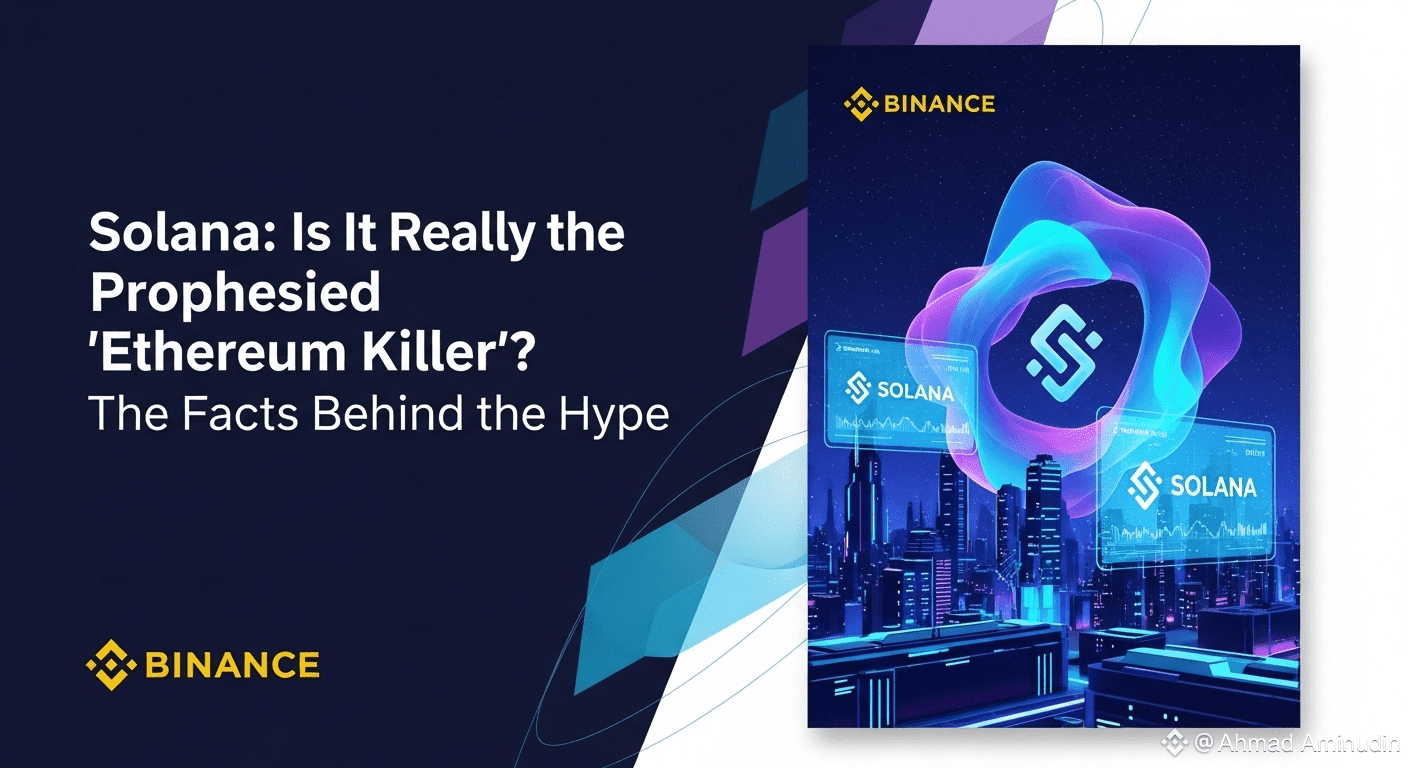
Imagine paying less than one-thousandth of a cent for a crypto transaction, or trading NFTs without fear of gas fees exploding. That's Solana's promise – and the reason the "Ethereum Killer" label sticks. But as someone deeply immersed in observing blockchain's evolution, I believe the narrative is far more nuanced than a simple "kill." Let's dissect why Solana is shaking up the crypto stage and whether the hype is justified.
Solana first captivated me not with complex whitepapers, but with its practical reality: speed and cost efficiency bordering on the surreal. While the Ethereum network sometimes chokes at 15-30 TPS, with gas fees soaring above $100 during peak times, Solana consistently delivers thousands of transactions per second (with a theoretical peak of 65,000 TPS!) at an average cost of $0.00025. This isn't just a difference; it's a generational leap in blockchain scalability and Web3 accessibility. This frictionless user experience (UX), especially for DeFi and NFTs, is its primary magnet. You can transact, swap assets on DEXs like Raydium, or collect NFTs on Magic Eden without the anxiety of unpredictable costs – tangible democratization of finance.
The secret sauce? A fundamentally different architecture. Solana isn't just a faster Ethereum. Its innovation lies in Proof of History (PoH). Picture PoH as an indisputable cryptographic clock, timestamping every transaction before validators process it. This eliminates the massive communication overhead between validators needed to agree on event order, enabling insane parallel processing. Bolstered by Proof of Stake (PoS) for final security, this combination delivers the high throughput that's Solana's trademark. This isn't mere technical jargon; you feel it directly in your wallet and your user journey.
Proof? A rapidly growing ecosystem, not just promises. I've witnessed Solana's DeFi TVL surge past billions of dollars, hosting innovative projects like Marinade Finance (liquid staking) and Jito (MEV solutions). Its NFT scene pulsates with energy, boasting collections like Mad Lads that cultivate fanatical communities. The strategic migration of the Helium Network to Solana in 2023, seeking scalability for millions of IoT devices, stands as a testament to industry confidence. Even giants like Visa are experimenting with stablecoin payments (using USDC and PYUSD) on Solana. This isn't just "potential"; Solana has become a home for real-world utility.
But make no mistake, Solana isn't without its thorns. As a critical observer, I acknowledge its challenges are real. Network downtime incidents, particularly during peak NFT mania (remember the major outages in 2021-2022?), dealt a blow to its narrative of flawless reliability. Questions around decentralization persist. Achieving that speed requires sophisticated (and expensive) validator hardware, naturally limiting the validator count compared to Ethereum. The core team and Solana Foundation are actively enhancing network stability (Solana v1.16 brought significant improvements) and diversifying validators, but this is a marathon, not a sprint. Competition is also fierce. Ethereum Layer-2 solutions like Arbitrum and Optimism are growing rapidly, while new contenders like Aptos and Sui chase scalability with different approaches.
So, back to the burning question: Is Solana an "Ethereum Killer"? In my view, that label is overly simplistic and likely misplaced. Solana won't "kill" Ethereum anytime soon. Ethereum possesses immense liquidity, battle-tested security, and a far larger developer ecosystem. What Solana has done brilliantly, however, is force an evolution. It proved that a fast, cheap public blockchain isn't utopian – it's a technical reality achievable right now.
It's a catalyst, not an executioner. Solana has raised the bar for what everyday users expect from Web3 UX. It's challenging all players, including Ethereum, to innovate faster on scalability and low transaction costs. Its hype, while sometimes excessive, rests on a foundation of substantial technical achievement and real-world adoption across GameFi, DeFi, and NFTs.
My final verdict? Solana may not be an Ethereum "killer" in the literal sense, but it's undeniably a major disruptor that has permanently altered the competitive landscape. It proves there's space – even a necessity – for multiple blockchains with distinct strengths. For those seeking an alternative with blazing speed, micro-costs, and smooth UX for specific applications, Solana offers an incredibly compelling, live-and-functioning value proposition. It has successfully carved out its own throne in the Web3 realm. And that, I believe, is far more significant and impactful than any "killer" label.
DISCLAIMER: This represents my personal opinion based on observing the blockchain ecosystem. NOT financial advice.
